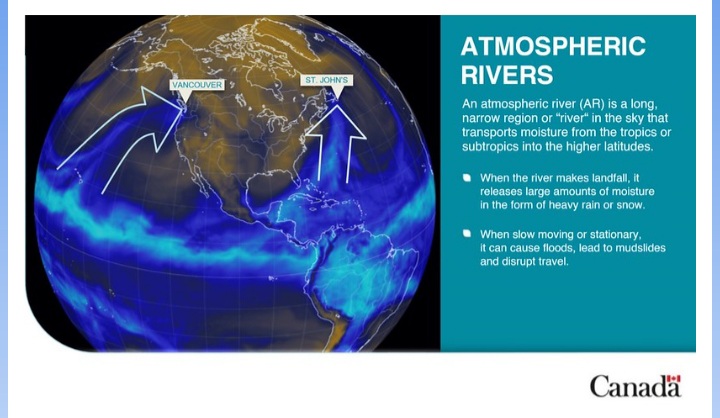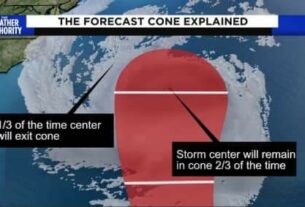**** Info via Environment Canada
Atmospheric River
What river has the largest flow of water on Earth? You guessed it, the Amazon, with an average water discharge of 209,000 m3/s! But when meteorologists talk about a massive “river of moisture,” they’re not referring to the Amazon! To meteorologists, an atmospheric river is a broad band or region of water vapour that transports vast quantities of moisture over great distances. It could be said that the biggest rivers in the world are actually in the sky! For those living on the West Coast, the rain yesterday was indeeed another episode of atmospheric river.
What is an atmospheric river?
An atmospheric river (AR) is a continuous stream of moisture stretching thousands of kilometres from the tropics and subtropics to the mid-latitudes. When this moisture makes landfall on the western coast of North America, it falls as heavy downpours. If the atmospheric river stalls over one location for a long period of time, widespread flooding is likely to happen.
Atmospheric rivers are huge! On average, an AR is 400 km wide and over 1000 km long. They have also been called a “Pineapple Express” or a “tropical punch” in western Canada because the river often originates around the same latitude as the Hawaiian Islands. Western Canada typically experiences between 12 and 24 ARs in any one year.
Scientists first started monitoring and researching atmospheric rivers in the 1990s. Today, our weather warnings focus on the weather conditions that atmospheric rivers create, including heavy rain, heavy snow and strong winds, as well as their possible impacts.
Highway 7 – Assessing damage at Ruby Creek. Credit: B.C. Ministry of Transportation and Infrastructure
In 2014, Natural Resources Canada partnered with the province of British Columbia, Pinna Sustainability and other organizations to publish a document called The Future of Atmospheric Rivers and Actions to reduce Impacts on British Columbians. According to this document, scientific findings suggest that we can expect atmospheric rivers to increase in severity and intensity over the coming century.




